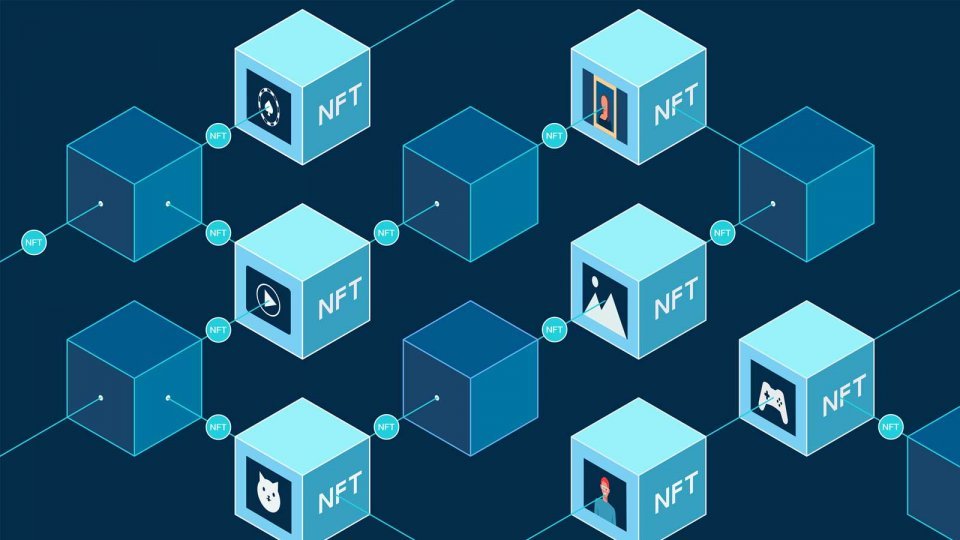How Blockchain Works: An In-Depth Guide
Blockchain technology, the backbone of cryptocurrencies like Bitcoin and Ethereum, is a decentralized, distributed ledger that records transactions in a secure, transparent, and immutable manner.
While it is most commonly associated with digital currencies, blockchain’s potential applications extend far beyond finance, impacting sectors like supply chain management, healthcare, and real estate.
Lets delve into the mechanics of blockchain, explaining its core concepts, components, and processes.
Core Concepts of Blockchain

- Decentralization: Unlike traditional databases managed by a central authority, blockchain operates on a peer-to-peer network. Each participant (node) has access to the entire database and its history. No single node controls the information or the network.
- Distributed Ledger: Blockchain maintains a distributed ledger where all transactions are recorded across multiple nodes. This ensures that no single point of failure exists and enhances transparency and security.
- Immutability: Once data is recorded on the blockchain, it cannot be altered or deleted. This immutability is ensured through cryptographic hashing and consensus mechanisms.
- Consensus Mechanisms: These are protocols used by blockchain networks to agree on the validity of transactions. Common consensus mechanisms include Proof of Work (PoW), Proof of Stake (PoS), and Delegated Proof of Stake (DPoS).
Components of Blockchain
- Blocks: A blockchain is a chain of blocks, each containing a list of transactions. Each block comprises:
- Header: Contains metadata such as the previous block’s hash, a timestamp, and the nonce.
- Transactions: A list of transactions that have been validated and added to the block.
- Hashes: A cryptographic hash function takes an input and returns a fixed-size string of bytes. Blockchain uses hashes to link blocks together. Each block contains the hash of the previous block, creating a secure chain.
- Nodes: Nodes are computers that participate in the blockchain network. They can be full nodes, which store the entire blockchain, or lightweight nodes, which store only a subset of the blockchain.
- Smart Contracts: These are self-executing contracts with the terms directly written into code. They automatically enforce and execute agreements when predefined conditions are met.
The Blockchain Process
- Transaction Initiation: A user initiates a transaction by creating and signing a transaction request using their private key. This transaction includes details like the recipient’s address, the amount, and any additional data.
- Transaction Broadcasting: The signed transaction is broadcast to the blockchain network. Nodes receive the transaction and verify its validity based on the sender’s balance and the transaction’s structure.
- Transaction Validation: Nodes validate transactions through consensus mechanisms. In PoW, for example, miners compete to solve a complex mathematical problem. The first miner to solve it gets to add the block to the blockchain and is rewarded with cryptocurrency.
- Block Creation: Once validated, the transaction is included in a new block, along with other validated transactions. The block is then appended to the existing blockchain.
- Propagation and Consensus: The new block is propagated across the network, and nodes update their copies of the blockchain to include the new block. Consensus ensures that all nodes agree on the current state of the blockchain.
Consensus Mechanisms

- Proof of Work (PoW): Used by Bitcoin, PoW requires miners to solve computationally intensive puzzles to add blocks. This process secures the network but consumes significant energy.
- Proof of Stake (PoS): In PoS, validators are chosen based on the number of coins they hold and are willing to “stake” as collateral. This method is more energy-efficient than PoW.
- Delegated Proof of Stake (DPoS): DPoS involves stakeholders voting for a small number of delegates who validate transactions and create blocks. This method is efficient and scalable.
Security and Scalability
Blockchain’s security comes from its decentralized nature, cryptographic hashing, and consensus mechanisms. However, scalability remains a challenge.
As the number of transactions increases, the network can become congested, leading to slower transaction times and higher fees. Solutions like the Lightning Network (for Bitcoin) and sharding (for Ethereum) are being developed to address these issues.
Applications Beyond Cryptocurrency
- Supply Chain Management: Blockchain enhances transparency and traceability, allowing stakeholders to track the origin and movement of goods.
- Healthcare: Blockchain secures patient records, ensuring data integrity and privacy while facilitating easy access for authorized personnel.
- Real Estate: Blockchain simplifies property transactions by reducing paperwork, enhancing transparency, and preventing fraud.
- Voting: Blockchain can create secure, transparent, and tamper-proof voting systems, increasing trust in electoral processes.
Conclusion
Blockchain technology represents a revolutionary shift in how data is managed and secured. Its decentralized, immutable nature offers numerous advantages over traditional systems, from enhanced security to increased transparency.
While challenges like scalability persist, ongoing innovations promise to unlock even greater potential for blockchain applications across various industries.
As technology continues to evolve, blockchain is poised to play a pivotal role in shaping the future of digital transactions and data management.




